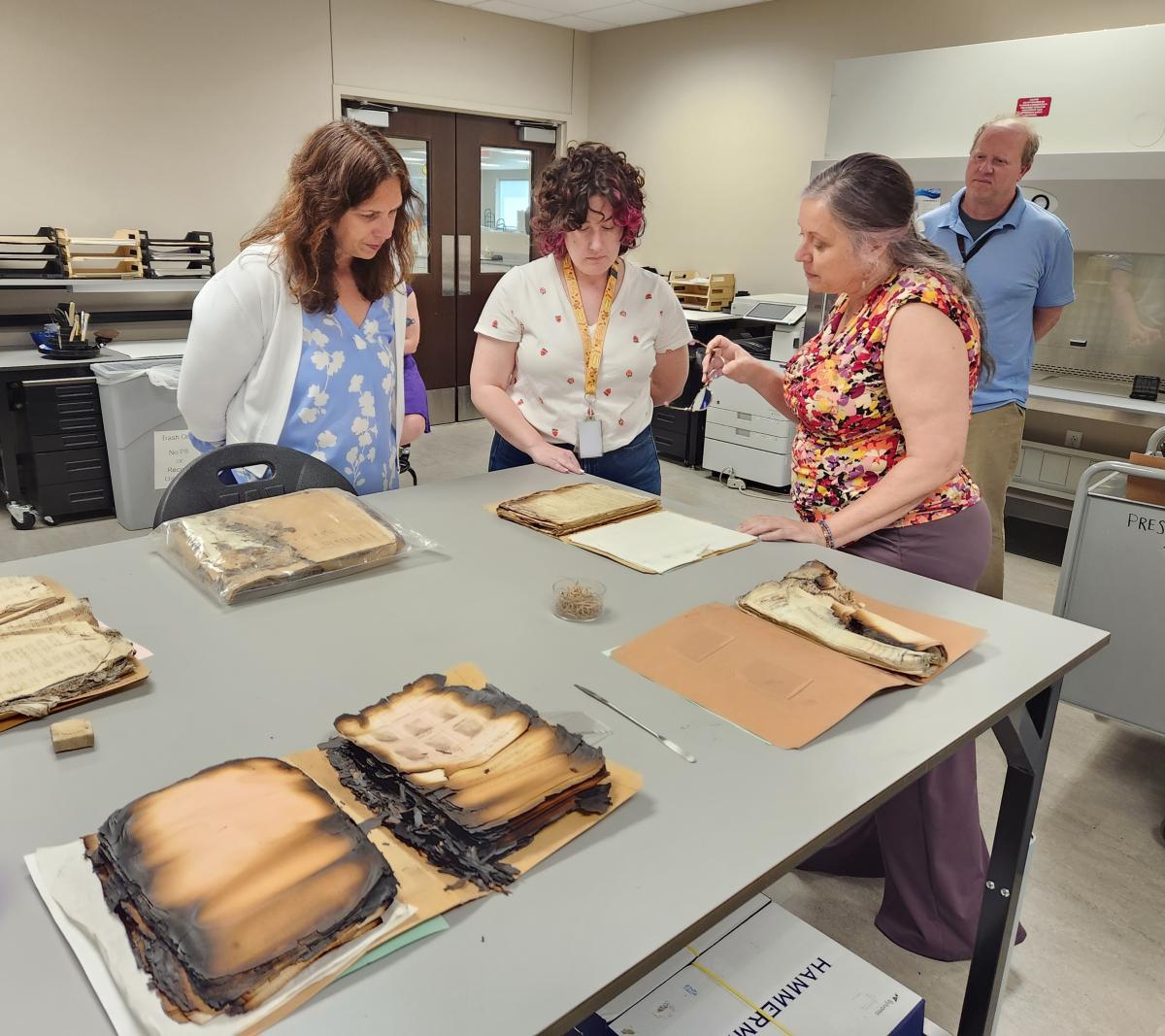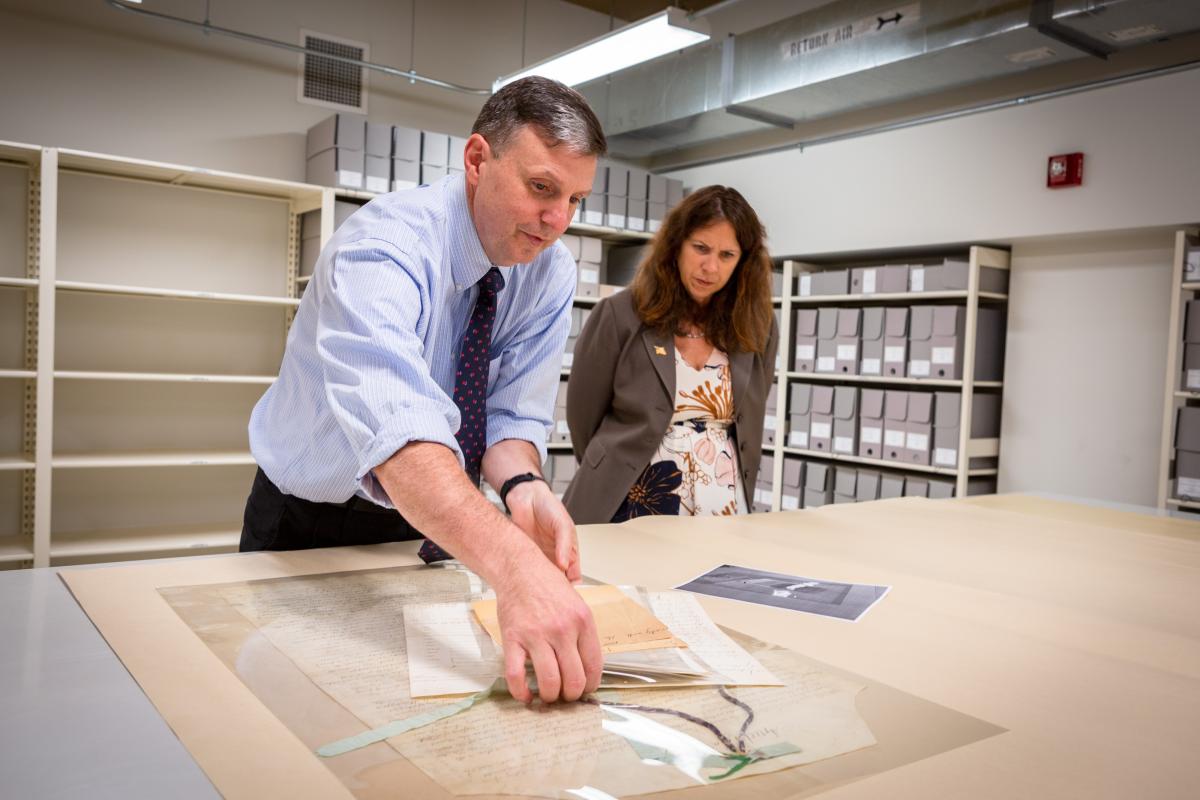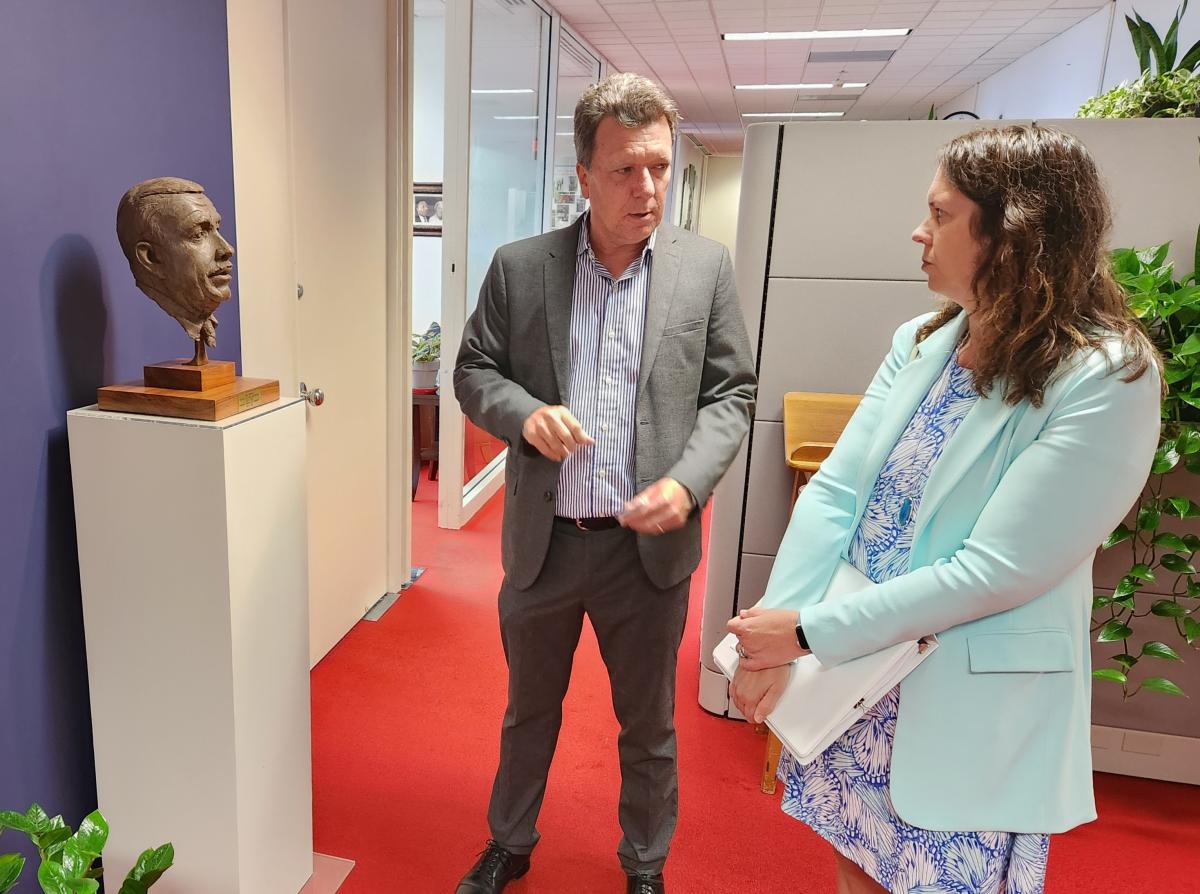
Improving Access, Reducing Barriers Top Priorities for New Archivist
By Victoria Macchi | National Archives News
WASHINGTON, June 30, 2023 — Dr. Colleen Shogan began her tenure as the 11th Archivist of the United States last month, launching what she intends to be a tenure focused on improving access to and expanding the reach of the National Archives and Records Administration (NARA).
Shogan laid out her hopes for the agency in an interview with National Archives News during her first week as Archivist. The interview from May 23, 2023, has been edited here for length and clarity.
Follow Dr. Shogan on Twitter and Instagram for additional photos and insights into her work.
Dr. Shogan, welcome. This is your first time talking with National Archives News. Since this is your first week here, tell us about what the last week has been like for you as head of the National Archives?
Well, it's been a whirlwind. It's been a very exciting time. And I've been waiting a long time for this. I've really enjoyed being able to visit many of the staff who work here at AI [the National Archives Building] and also had the opportunity to visit Archives II in College Park.
You were able to actually see some records and documents in the last week, including General Order No. 3, which is really a treasure here. What's it been like to see those records firsthand?
I mean, it does give you chills down your spine... I wasn't even expecting to see General Order No. 3 when I walked into that room. So that was a very welcome surprise, considering that we are entering into Civic Season very soon with Juneteenth, and then of course, the Fourth of July.
What are you most looking forward to as Archivist of the United States?
The Archives is a complex place, so there's a lot of diversity of programs, a diversity of people who work at the Archives. What I'm looking forward to most is being able to, of course, get to know the people who work here in the Washington, DC, area, but also to travel to the 40-some other locations around the United States that house and preserve federal records.
There are other things that I'm looking forward to. I mean, there's no place in the world to celebrate the Fourth of July like the National Archives. I've always loved the Fourth of July as a holiday, but I've celebrated it like every other American has celebrated it, you know, with having people over to our house and fireworks and all kinds of fun things to do. But it's going to be very special this year, and I am looking forward to that.
Are you planning to visit every National Archives facility?
I will visit every facility, and we will try to group those in a way that makes sense so that I can visit more than one facility in a given trip. And we will try to do this as efficiently and economically as possible.
Your first visit is to NPRC, the National Personnel Records Center (NPRC).
The first visit outside of Washington, DC, outside of Archives I or Archives II, will be to the NPRC in St. Louis and then also to the civilian records in Valmeyer.
There is a lot going on down there.
Yes, there is. If you watched any of my confirmation hearing or any of the interaction that I had with the Homeland Security and Government Affairs Committee that considered my nomination, I said in both of my hearings that [that visit] would be my top discrete priority.… I view veterans records as a critical part of access, right? That's an important part of keeping that strategic focus. And there is a backlog of those records requests due to the pandemic. We're figuring out ways in which we can reduce and eliminate that backlog as quickly as possible so that we can serve our veteran community and they can have access to their full service record if they need it.
You've said that you are going to be in sort of listening and learning mode these first few months. What does that mean for you?
Like I said, this place is a very complex place. It's not just that there are one or two different discrete functions at the National Archives. There are many functions. So when I say listening and learning, I do mean that: to understand what the variety of divisions and programs do, what their mission is. And then also hearing from staff. What are the problems? What are the things that you're concerned about? And trying to chronicle those for myself, keep track of them, and figure out ways in which we're able to make things better.
This has definitely been for the National Archives, a very high-profile few years. Is there an opportunity in that to engage more with the public, to perhaps engage more with communities that we have not engaged sufficiently with before?
I think there is. It's been an extraordinary 12 months to 24 months for the National Archives.…If you had walked out into the street and asked anybody over a year ago, “do you know what the National Archives is?” If they saw National Treasure, they may [say], “Oh, is that the place where the Declaration is?” They may know that. Now, I think you would go out and ask people—and particularly people who watch the news on some regular basis—they will have an idea of the role of the National Archives and what it does. It may not be a fully accurate depiction of what NARA does, but at least we're on people's radars. And I think with that, it poses a lot of opportunities. So we want people that are curious about us, that want to learn more, to go to the website. Of course, that's how people across the United States are going to mostly engage with us. And we want them to learn more about how the agency works, of course, but also to engage with the records, and particularly the records we have online. So we should always be trying to figure out, how are we going to convert people who are curious about the Archives—or even our visitors that come here to Washington, DC, or who physically visit us in DC or any of the other installations across the United States, Presidential Libraries—how can we convert those individuals into… a user that is able to really engage with our records for a lifetime?
You have worked at cultural institutions and a lot of Washington, DC, institutions in your career. How has that prepared you to lead the National Archives?
Most of my time was spent at the Library of Congress, for well over a decade, in a number of different senior positions. There's obviously a distinct mission at the National Archives. It's not the same mission as the Library of Congress. But there are a lot of parallels, and there are a lot of similarities. I understand how cultural institutions face pressures of doing the day-to-day job, but they also face, especially these days, the pressure to really be externally focused. I hope to really spend a good portion of my time as Archivist of the United States on really sharing the history and the records with the American people as much as possible.
Prior to joining the National Archives, you actually used National Archives records as a researcher. You used our records as resources. What was that experience like for you? How did you interact with our records before?
I used the National Archives—the website and the Catalog—very frequently. When I was a professor at George Mason University and really engaging with the records as an academic, as a political scientist, I frequently would utilize the records from the Presidential Library system. And one time in particular, I can remember I wrote a paper on President Clinton's Oklahoma City bombing speech. I was focused a lot on rhetoric and on speeches, and I wanted to do an entire research project on the drafting of that speech. What was President Clinton's goal with that speech? Because there were a number of goals that he had for it. And I was able to engage with the Clinton Library at the time. I did not go and travel to the Clinton Library, because they were able to help me just by engaging with them via email, and I was able to order a number of records related to the Oklahoma City bombing speech.
I remember when I got the records. I was able to email [the library], but it wasn't to the point where they would be able to scan the documents and send them to me in a PDF. I had to actually order copies of the records and pay a small fee, and then they mailed the copies of those particular records to me. And I remember when I got the small box in the mail how exciting it was to open it up. And sure enough, there was material in there of President Clinton looking at drafts of the speech and actually marking up segments and drafts of the speech with pen and paper. I was able to see key places where he changed the wording of the speech and changed one word to the other. And that was really important because even when I had done speechwriter interviews of the speech, they couldn't remember exactly what words President Clinton changed when he was looking at the drafts. But sure enough, it was right there on the records, which was really helpful in the in-depth story I was trying to tell.
Most recently, I worked at the White House Historical Association as a senior vice president. I also had the opportunity to do some of my own research, which I really did enjoy. I wrote a short piece that will be coming out, subsequently, in the magazine that the association publishes, on President Eisenhower's farm in Gettysburg. And that's a National Park Service site, but there were records at the Eisenhower Library related to the Secret Service agents that would travel with President Eisenhower and Mrs. Eisenhower to the farm in Gettysburg. They had interviewed the Secret Service agents as part of an oral history project, and that was really helpful because I was able to get a very in-depth understanding of what was going on at Eisenhowers’ farm, particularly when he was President, and particularly after he suffered a heart attack—in essence, that farm became the White House as he recovered. As he started feeling better, he started taking more meetings as President. Those in-depth interviews and files from the Secret Service agents were really helpful to me.
When you spoke to staff for the first time, you made a comment about the personal aspect of finding personal records within the National Archives system, and the bigger, the bigger picture of the founding documents we have—so many of the crucial documents and records of the country. Can you speak more to the versatility of the National Archives for the public?
We have to meet people where they are, where they want to come and interact with us. There will be people that will be, you know, aficionados and lovers of American history, and they will want to see the most important documents, like I was able to see, that commemorates Juneteenth, and led to the creation of eventually a federal holiday to commemorate that moment. So there'll be people that will be very appreciative of that.
But there will also be people who are looking at immigration records, that are looking at census records, who are looking for their veterans records or maybe their, their parents’ or their siblings’ veterans records. Very individual types of experiences and either seeing those for meaningful reasons or seeing them for reasons because they need those records to establish criteria for benefits, or other things that the federal government really does owe them. And so we have to realize that people are coming from all kinds of different perspectives.…
That also means serving communities that haven't traditionally used the National Archives. And that will determine strategically—and I know this work is already being done here at the National Archives—but thinking about what records we choose to digitize and make available online and in the Catalog—for example, the Alaska Native records. That's really critically important because, otherwise, how are people going to be able to access those records? There are real barriers there. We ask, why aren't all Americans using the National Archives? It's because of those barriers. So we have to figure out where those barriers are and how we can eliminate them. And once again, throwing the treasure chest open to everyone also means keeping that in mind when we decide strategically where to put resources for things like digitalization.
When you think forward to what you want your legacy to be as the 11th Archivist of the United States, as the first woman who's held this position permanently, what do you think of?
One word I really keep in my head is access, and I mean access in all the ways that we've talked about in this interview: access for people who are who are curious, who want to learn more, access for people who need the records for a particular reason, access for people that maybe find interacting with a government agency or government institution intimidating. I mean, this is a beautiful building, but it is also an intimidating building. When you walk up, the way it was designed and how it is can be intimidating for some people. So we have to figure out ways in which we make sure that all Americans feel welcome at the National Archives, and they're able to go on their own journey, and then facilitate it. So that's really the word that I keep in my head. And it doesn't just mean one thing. We are here to preserve those records, but we are also here to share them. And to me, that's very, very important. We have to keep both of those elements really foremost in our minds as we're doing our work.



